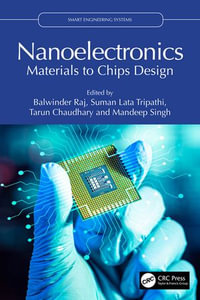
eTEXT
Functional Thin Films and Nanostructures for Sensors
Synthesis, Physics and Applications
By: Anis Zribi, Jeffrey Fortin
eText | 5 April 2009 | Edition Number 1
At a Glance
eText
$159.01
or
Instant online reading in your Booktopia eTextbook Library *
Read online on
Desktop
Tablet
Mobile
Not downloadable to your eReader or an app
Why choose an eTextbook?
Instant Access *
Purchase and read your book immediately
Read Aloud
Listen and follow along as Bookshelf reads to you
Study Tools
Built-in study tools like highlights and more
* eTextbooks are not downloadable to your eReader or an app and can be accessed via web browsers only. You must be connected to the internet and have no technical issues with your device or browser that could prevent the eTextbook from operating.
ISBN: 9780387686097
ISBN-10: 0387686096
Series: Integrated Analytical Systems
Published: 5th April 2009
Format: ePUB
Language: English
Publisher: Springer Nature
Edition Number: 1
You Can Find This eBook In
This product is categorised by
- Non-FictionEngineering & TechnologyTechnology in GeneralNanotechnology
- Non-FictionSciencePhysics
- Non-FictionEngineering & TechnologyEnergy Technology & EngineeringElectrical Engineering
- Non-FictionEngineering & TechnologyOther Technologies & Applied SciencesApplied Optics
- Non-FictionEngineering & TechnologyElectronics & Communications EngineeringElectronics EngineeringElectronic Devices & Materials
- Non-FictionEngineering & TechnologyMechanical Engineering & MaterialsMaterials ScienceTesting of Materials
- Non-FictionEngineering & TechnologyMechanical Engineering & MaterialsMaterials Science
- Non-FictionEngineering & TechnologyElectronics & Communications EngineeringElectronics Engineering























